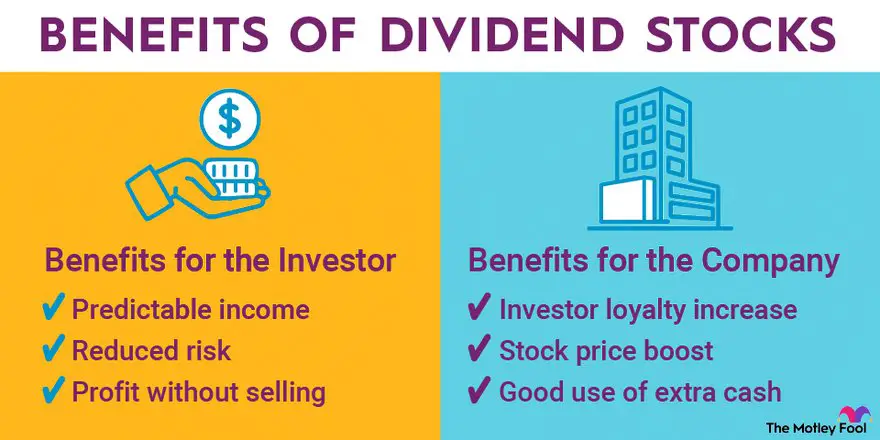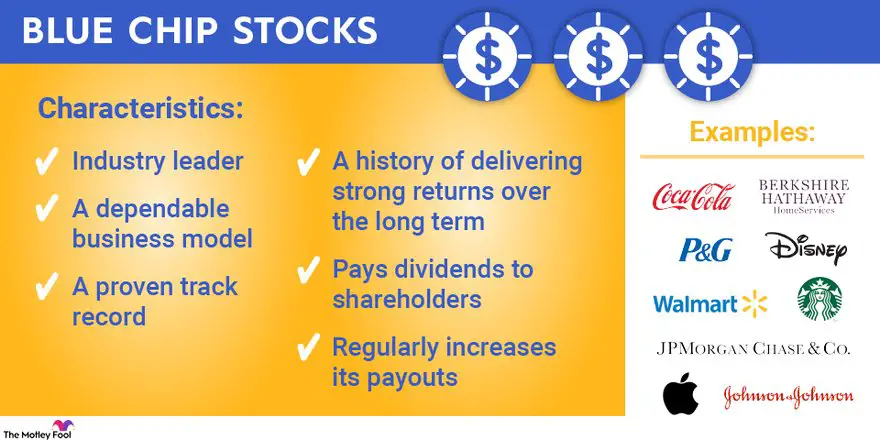High-dividend stocks can be a lucrative investment option, but they also come with their fair share of risks. In this article, we will delve into the benefits and risks of high-dividend stocks, helping you make informed decisions that align with your financial goals. Whether you’re a seasoned investor or just starting out, understanding the intricacies of these stocks is essential for a successful portfolio. So let’s explore the world of high-dividend stocks, their potential benefits, and the associated risks that you need to be aware of.
Benefits and Risks of High-Dividend Stocks
Investing in high-dividend stocks can be a lucrative strategy for investors looking to generate a consistent income stream. High-dividend stocks are shares of companies that distribute a significant portion of their earnings to shareholders in the form of dividends. While these stocks offer the potential for robust returns, they also come with their fair share of risks. In this article, we will explore the benefits and risks of high-dividend stocks, helping you make informed investment decisions.
Benefits of High-Dividend Stocks
Investing in high-dividend stocks can offer several advantages, making them an attractive option for income-focused investors. Let’s delve into some of the key benefits of investing in these stocks:
1. Income Generation
One of the most significant benefits of high-dividend stocks is their ability to provide a steady income stream. By investing in companies that consistently distribute dividends, investors can enjoy regular payments, which can be particularly beneficial for retirees or those who rely on their investments to cover living expenses.
2. Dividend Reinvestment
Another advantage of high-dividend stocks is the option to reinvest the dividends back into the stock. This process, known as a dividend reinvestment plan (DRIP), allows investors to purchase additional shares using the dividend payments received. Over time, this can lead to the compounding of returns, potentially increasing both the income and the value of the investment.
3. Defensive Qualities
High-dividend stocks often belong to established companies that generate stable cash flows. These companies tend to operate in industries that are relatively less affected by economic downturns, making them more resilient during market downturns. Therefore, investing in high-dividend stocks can provide a defensive quality to a portfolio, helping to mitigate the impact of market volatility.
4. Attractive Total Returns
While the primary focus of high-dividend stocks is income generation, they can also offer attractive total returns. Historically, dividend-paying stocks have outperformed non-dividend-paying stocks over the long term. By investing in companies with solid fundamentals and a history of increasing dividends, investors can potentially benefit from both capital appreciation and dividend income.
Risks of High-Dividend Stocks
Although high-dividend stocks offer appealing benefits, they are not without risks. Understanding and managing these risks is crucial for investors considering this investment strategy. Let’s explore some of the risks associated with high-dividend stocks:
1. Dividend Cuts or Suspensions
One of the most significant risks of investing in high-dividend stocks is the potential for dividend cuts or suspensions. Companies may reduce or eliminate dividends during challenging economic periods or when facing financial difficulties. Such actions can have a negative impact on the stock price and the income received by investors. Therefore, it is essential to analyze the financial health and dividend payout history of companies before investing in their high-dividend stocks.
2. Interest Rate Sensitivity
High-dividend stocks can be sensitive to changes in interest rates. When interest rates rise, income-focused investors may shift towards fixed-income investments, such as bonds, as they offer competitive yields and lower volatility compared to stocks. This change in investor preference can lead to a decrease in demand for high-dividend stocks, resulting in potential price declines. Therefore, investors should consider the prevailing interest rate environment when investing in high-dividend stocks.
3. Market Volatility
Like any other stock, high-dividend stocks are subject to market volatility. During market downturns or periods of heightened uncertainty, the stock prices of dividend-paying companies can experience significant fluctuations. Investors should be prepared for short-term price volatility, which might affect the overall value of their investment. However, it’s essential to note that high-quality dividend-paying companies tend to withstand market turbulence relatively well over the long term.
4. Company-Specific Risks
Investors should also consider company-specific risks when investing in high-dividend stocks. Factors such as industry disruptions, competitive pressures, management changes, or regulatory challenges can impact a company’s ability to sustain its dividend payments. Conducting thorough research on each individual company’s financials, competitive position, and long-term growth prospects is key to identifying potential risks and ensuring a well-diversified portfolio.
Investing in high-dividend stocks can provide investors with a reliable income stream and the potential for attractive total returns. The benefits of income generation, dividend reinvestment, defensive qualities, and the ability to compound returns make high-dividend stocks an appealing investment option. However, investors must also consider the risks associated with dividend cuts, interest rate sensitivity, market volatility, and company-specific factors.
By conducting thorough research, diversifying investments, and regularly monitoring the performance of high-dividend stocks, investors can capitalize on the benefits while mitigating potential risks. Remember, it’s essential to consult with a financial advisor or do your own due diligence before making any investment decisions.
FAQs
Please refer to the FAQ section for answers to common questions about high-dividend stocks.
Why I Invest for High Dividend Income Over Growth
Frequently Asked Questions
Frequently Asked Questions (FAQs)
What are the benefits of investing in high-dividend stocks?
Investing in high-dividend stocks can provide several benefits:
- Income Generation: High-dividend stocks can generate a steady stream of income through dividend payments.
- Portfolio Growth: Reinvesting dividends can help accelerate the growth of your investment portfolio over time.
- Dividend Stability: Companies that consistently pay high dividends often have a stable financial performance and cash flow.
- Income Diversification: High-dividend stocks can offer an additional income source, diversifying your investment portfolio.
What are the risks associated with investing in high-dividend stocks?
While there are benefits, investing in high-dividend stocks also carries certain risks:
- Market Volatility: High-dividend stocks may be more susceptible to market volatility, leading to potential price fluctuations.
- Dividend Cuts: Companies can reduce or eliminate dividends, impacting your expected income if the financial performance deteriorates.
- Limited Growth: High-dividend stocks may have slower capital appreciation compared to growth-focused stocks.
- Industry/Company-Specific Risks: Some high-dividend stocks may face specific risks associated with their industry or individual company issues.
How do high-dividend stocks produce income for investors?
High-dividend stocks generate income for investors through dividend payments. When you invest in high-dividend stocks, the companies share a portion of their earnings with shareholders in the form of regular cash dividends. These dividends can be reinvested or used as a source of income.
How can high-dividend stocks contribute to portfolio growth?
High-dividend stocks can contribute to portfolio growth in several ways:
- Dividend Reinvestment: Reinvesting dividends allows you to purchase more shares, increasing the overall investment value.
- Compounding Returns: As you reinvest dividends, the additional shares may generate more dividends, creating a compounding effect over time.
- Capital Appreciation: While high-dividend stocks primarily focus on income generation, they can also experience capital appreciation, enhancing portfolio growth.
Are high-dividend stocks more suitable for income-oriented investors?
High-dividend stocks are often more suitable for income-oriented investors who prioritize regular income streams. These investors may rely on the dividends produced by their investments to meet immediate financial needs or to supplement other sources of income.
What factors should be considered when selecting high-dividend stocks?
When selecting high-dividend stocks, it’s important to consider the following factors:
- Dividend Yield: Look for stocks with a relatively high dividend yield, which is the dividend payout compared to the stock price.
- Dividend History: Examine the company’s track record of consistent dividend payments and any historical dividend growth.
- Financial Health: Assess the company’s financial health, including profitability, cash flow, and debt levels, to ensure they can sustain dividend payouts.
- Industry Outlook: Consider the overall outlook for the industry in which the company operates to gauge its potential growth and stability.
How can I mitigate the risks associated with investing in high-dividend stocks?
You can mitigate the risks associated with investing in high-dividend stocks by:
- Proper Research: Thoroughly analyze the company’s financials, dividend history, and industry trends before making investment decisions.
- Diversification: Diversify your investment portfolio across different sectors and asset classes to reduce the impact of any single stock’s underperformance or dividend cut.
- Monitoring: Keep a close eye on the company’s performance, news, and any changes in dividend policies to react accordingly.
How do high-dividend stocks compare to growth stocks?
High-dividend stocks focus on income generation through regular dividend payments, while growth stocks prioritize capital appreciation. Growth stocks typically reinvest earnings to expand the business, often resulting in minimal or no dividends. The choice between high-dividend stocks and growth stocks depends on your investment goals and risk tolerance.
Final Thoughts
High-dividend stocks offer several benefits to investors. First and foremost, they provide a steady stream of income, making them particularly appealing to investors seeking regular cash flow. Moreover, these stocks often outperform lower-yielding alternatives, delivering strong returns. Additionally, high-dividend stocks can act as a hedge against market volatility, as their dividends provide a level of stability and cushion during uncertain times.
However, it is crucial to recognize the risks associated with high-dividend stocks. One major concern is the potential for dividend cuts or suspensions, which can negatively impact investors’ income and overall returns. Furthermore, high dividend yields may sometimes indicate underlying issues within a company, such as financial instability or unsustainable payout ratios. It is important for investors to conduct thorough research and analysis to ensure the sustainability of dividends and the financial health of the company.
In conclusion, high-dividend stocks offer the benefits of steady income, potential for strong returns, and stability during market volatility. Nevertheless, investors must remain cautious of the risks, including dividend cuts and underlying financial issues. By carefully evaluating the sustainability of dividends and conducting thorough due diligence, investors can make informed decisions and potentially leverage the benefits of high-dividend stocks while managing the associated risks.



